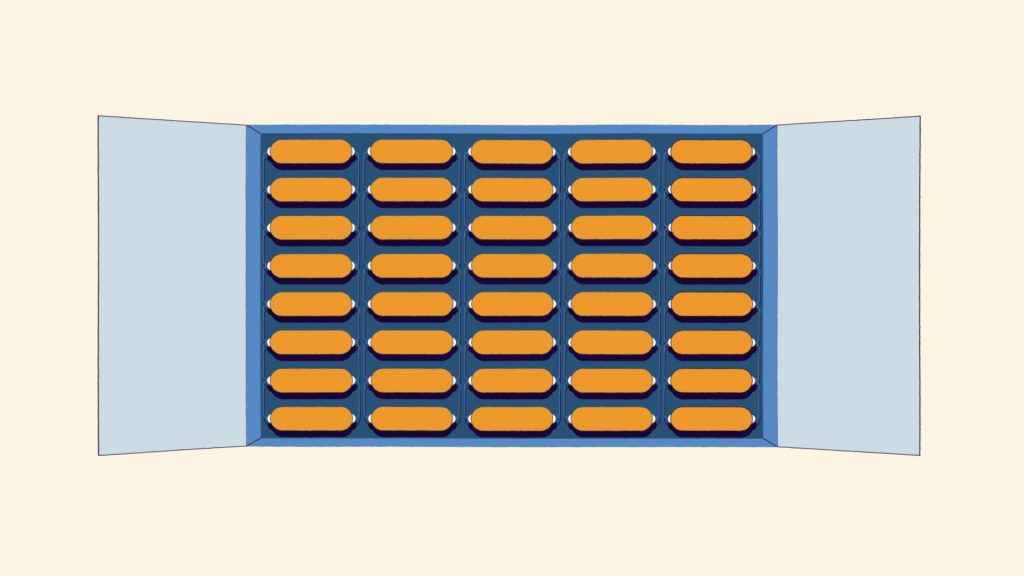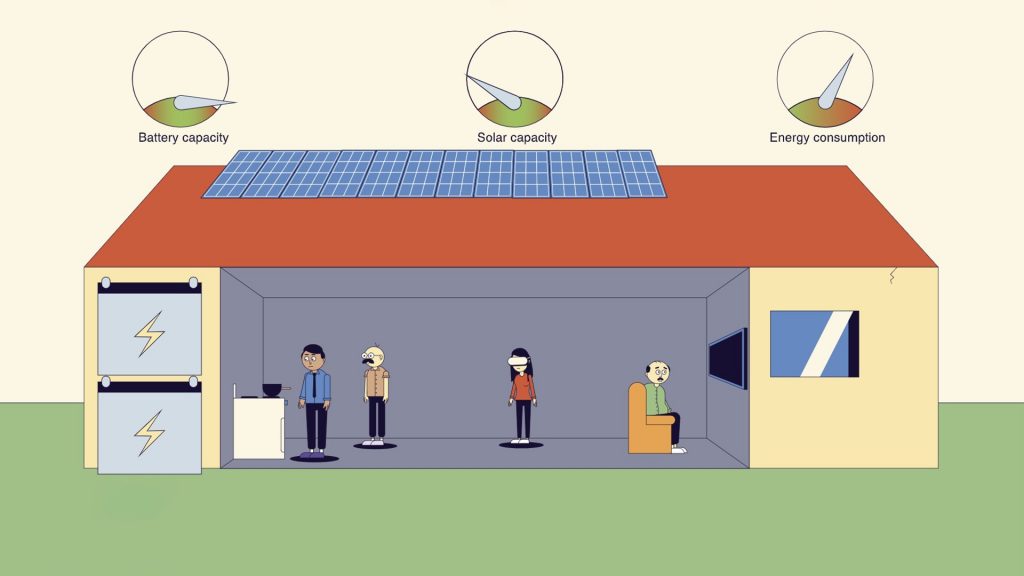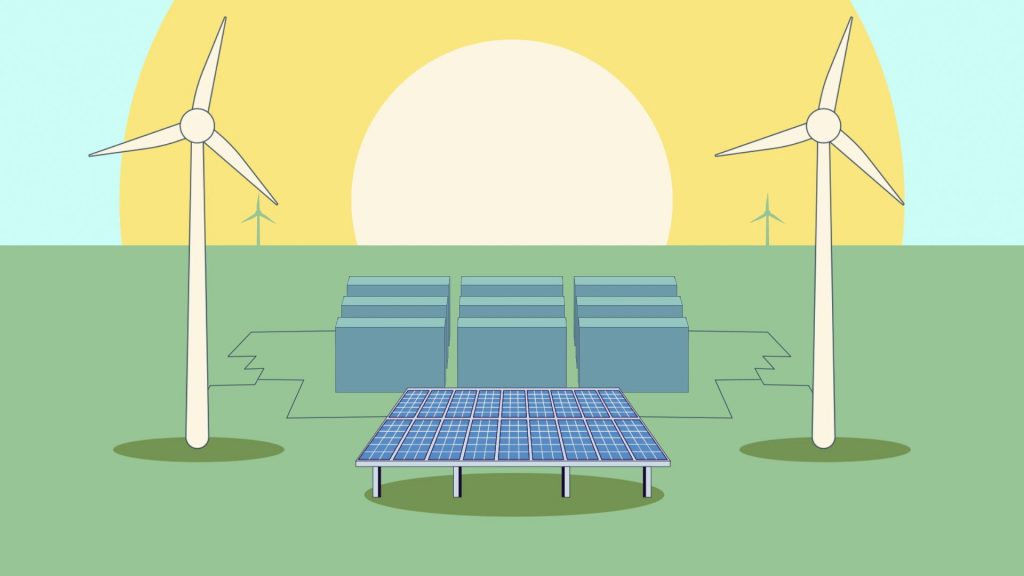Topic
How can solar energy power the night?
Renewable energy sources are intermittent by nature, whether it’s the sun setting, lack of wind, or even changes in the tides. Fortunately, there are ways to store excess energy to tap into at these times.
Video
A short 4 minute video explaining the topic for students.
How can solar energy power the night?
A short video showing how energy collected through electricity production can be stored in different ways for later use.
Use this video in your lesson or share directly with your students.
Digital Activities
Digital interactive activities can be used in your classroom in conjunction with the video, or independently.
Q&A
This interactive Q&A is designed to quiz students on what they have learned after watching the video.
This is a digital version of the multiple choice PDF worksheet below.
The home battery challenge
Students control three variables (solar panels, batteries, and people) to power their home overnight from the sun.
Demonstrates electricity production and storage requirements for their family home.
Worksheets and Classroom Activities
Topic PDF worksheets can be used in your classroom either in conjunction with the video or independently.
Q&A
This Q&A worksheet is designed to quiz students on what they have learned after watching the video.
This is a PDF version of the digital interactive found above.
Lemon battery
This worksheet has all the instructions on how to run an independent, practical classroom activity.
Students build a battery using a lemon and see it light an LED light.
Teacher Resources
Teacher notes & worksheet answers
By using the resources available for this topic, your students have the opportunity to learn:
- Capturing solar power is only the beginning, we also have to transport it to where it’s used
- The earliest battery was called a voltaic pile and used chemistry to generate electricity
- Modern batteries come in various sizes, and can be used to store large amounts of energy from the sun
- There are other methods of storing solar energy such as hydrogen, pumped hydro and gravity
This PDF includes:
- Video summary
- Literacy links
- Research tasks
- Curriculum links
- Worksheet answers
Curriculum Mapping
Lower Secondary topics are designed for Australian grade 7 and 8 students and are aligned to Australian curriculums.
Australian Curriculum Science, year 8
Overview. View link
Energy appears in different forms, including movement (kinetic energy), heat and potential energy, and energy transformations and transfers cause change within systems (ACSSU155). View link
Solutions to contemporary issues that are found using science and technology, may impact on other areas of society and may involve ethical considerations (ACSHE135). View link
Cross curricular priorities: Sustainability.
General capabilities: Numeracy, Literacy, Ethical understanding.
NSW Curriculum Science, stages 3 and 4
Overview. View link
Discusses how scientific understanding and technological developments have contributed to finding solutions to problems involving energy transfers and transformations (SC4-11PW)
Appreciates the importance of science in their lives and the role of scientific inquiry in increasing understanding of the world around them (SC4-1VA).
Cross curricular priorities: Sustainability.
General capabilities: Numeracy, Literacy.
Victorian Curriculum Science, levels 7 and 8
Overview. View link
Energy appears in different forms including movement (kinetic energy), heat, light, chemical energy and potential energy; devices can change energy from one form to another (VCSSU104). View link
Science and technology contribute to finding solutions to a range of contemporary issues; these solutions may impact on other areas of society and involve ethical considerations (VCSSU090). View link
Cross curricular priorities: Sustainability.
General capabilities: Numeracy, Literacy.
Additional Resources
Have you ever wondered how a big battery works? Learn the multiple roles big batteries play in stabilising the electricity grid. View link



